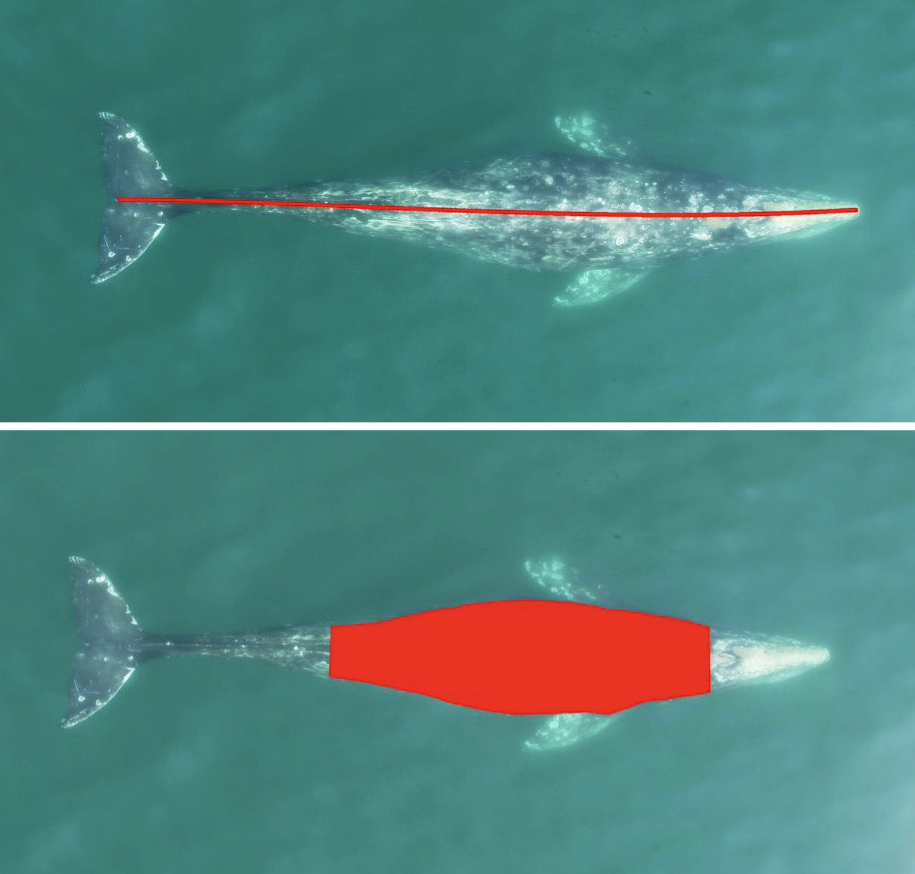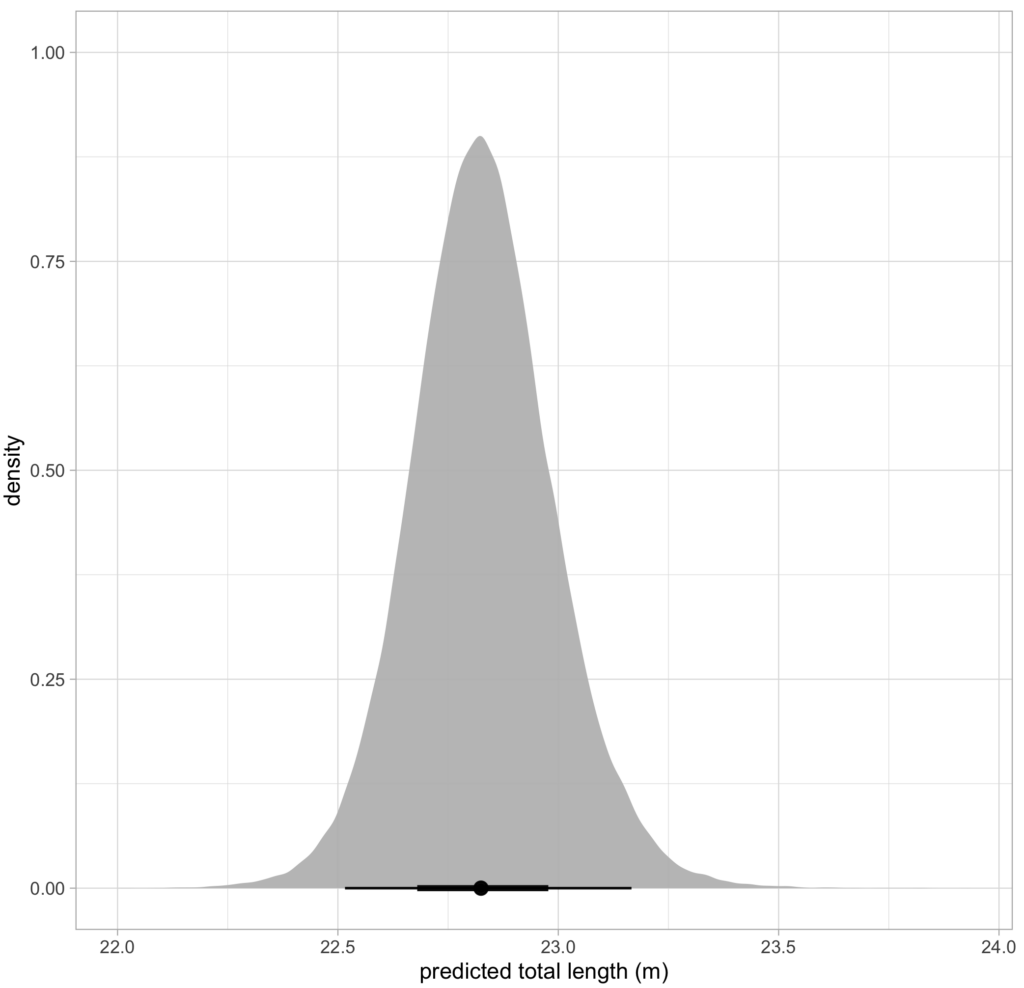By Lindsay Wickman, Postdoc, OSU Department of Fisheries, Wildlife, and Conservation Sciences, Geospatial Ecology of Marine Megafauna Lab
I’ve had the privilege of attending several marine mammal surveys aboard ships at sea, but I had never surveyed for marine mammals from the air. So, when given the opportunity to participate in ongoing aerial surveys off the Oregon Coast with the US Coastguard’s helicopter fleet, I enthusiastically said yes. As Craig Hayslip, a Faculty Research Assistant with the Marine Mammal Institute, prepared me for my first helicopter survey, I was all excitement and no nerves. That is, until he explained the seating arrangement.
“There are two types of helicopters you’ll be flying on, and because of the seating arrangement in the Jayhawk, we fly with the door open when surveying for whales – it’s the only way to get a sufficient view,” Craig casually explained. I stared at the iPad I would use for recording data and imagined it flying through that open door and toward the sea, while I looked on flustered and helpless. Sensing my worry, Craig quickly showed me a set of straps that attached to the iPad, so it could be secured to one of my legs.
In addition to ensuring the iPad stayed in the aircraft, the straps also meant my hands would still be free to handle the camera (to aid in species identification), and a small tool called a geometer (developed by Pi Techology). By lining up the whale sighting in the sight of the geometer, the observer can record the angle between the aircraft and the sighting. Since we also know the height of the helicopter (we fly at a constant altitude of 500 feet), this angle can be used to calculate horizontal distance from the aircraft, allowing an accurate location to be estimated for each sighting.
My first flight was from Warrenton, Oregon, a four-hour drive north from the Hatfield Marine Science Center in Newport. Once at the airport, our first stop was to head to the flight operations office (a.k.a. “Ops”), who set us up with proper clothing and headgear for the flight. As we checked in, rock music played on a speaker while uniformed Coast Guardsmen serviced a helicopter in the hangar. I started to feel like a cool insider, until I clumsily donned the canvas flight suit and tried on several helmets. Suddenly several pounds heavier, all my movements became very awkward.

After my safety briefing, the entire crew gathered for a pre-flight meeting. We discussed weather conditions, did a wellness check, and discussed the flight’s mission. The conversation also included a brief overview of our scientific aims – why exactly were we looking for whales?
Craig briefly described the research project we were contributing to, titled Overlap Predictions About Large whales (OPAL). The main goal of this project is to better understand the overlap between whales and fisheries, with the aim of reducing entanglement risk. Fishing methods that use fixed, vertical lines in the water column, like the Dungeness crab fishery, can entangle whales as they migrate and feed along Oregon’s coastline. Since reports of whale entanglements have increased on the West Coast in the last 10 years, managing this threat is essential to ensure both the health of whale populations and the stability of Oregon’s crab fishery. Preventing these entanglements requires an understanding of where whales are distributed along the coast, as well as the times of year overlap with fisheries is most likely to occur. The OPAL project isn’t just mapping whale sightings, though. By using models to correlate whale sightings with oceanographic conditions, OPAL is also aiming to predict where whales are likely to occur.
After explaining the mission, the crew had to reach a consensus on both the level of “risk” in the mission and its level of “gain.” For a whale survey flight, risk was deemed low, with medium gain. While I initially felt mild offence that our scientific work was deemed to have just “medium” gain, I quickly reminded myself that when the crew is not flying scientists around, they are literally saving human lives. It was also a reminder that our whale surveys could easily be interrupted if necessary – Craig had mentioned several instances where flights were diverted to assist in rescue or medical emergencies.
With the briefing over, each of us had to consent to the flight plan by saying, “I accept this mission.” I’d heard this phrase from secret agents and soldiers in movies, but never from a marine scientist. I felt out of place saying them at first, but the words undeniably helped me establish a self-assured confidence I would give the survey my 100%.
Finally, it was time to head out of the hangar and to the aircraft. With both a pair of earplugs and my flight helmet on, the whirring of the blades was just a soft hum. I couldn’t hear speech, so we all relied on hand signals to communicate until our headsets were connected to the aircraft. The crew helped make sure I correctly put on my seatbelt harness, which had not just one, but five buckles. While I still felt some mild concern for the iPad strapped to my leg, at least I knew I wouldn’t fall out.


Craig helped ensure I had all the equipment set up properly: the iPad’s survey program, the GPS tracking, and the computer recording the geometer’s measurements. Soon after, the helicopter slowly rose, hovering above the runway, before turning and heading towards the coast at speed. My stomach dropped slightly, my ears popped, and cold air rushed through the open door. I looked out at the Columbia River as it stretched toward the coastline and out to sea, and I couldn’t stop smiling.

As we approached the ocean, my attention shifted back to the mission, and I started scanning the surface for whale blows. With the large helmet on, I noticed the camera and geometer were much more difficult to use, so I also made “practice sightings” of passing boats and buoys. It didn’t take long before my first real whale sighting though – two gray whales (Eschrichtius robustus). Over the next two hours, I saw four more gray whales, and six more whales I was unable to identify due to distance. With each sighting, I had to act fast to make each geometer recording. The helicopter travels at a speed of 90 knots and whales can disappear soon after surfacing.
Two hours of flying with the door open meant my nose was running and my typing skills were worsening due to cold fingers. As exciting as it was to spot whales from the air, I was a little relieved when we arrived back at the airport and I could warm back up. Luckily, my nightmare of losing an iPad from the helicopter did not come true, and I was returning home with another survey to add to over 200 (and counting!) helicopter surveys completed for the OPAL project. Four different flights covering different parts of the Oregon coast are completed each month, so I know I have more flights to look forward to. After a successful first mission, I feel ready to take on my next flight.

If you’d like to learn more about the OPAL research project, check out these past blog posts:
A Matter of Time: Adaptively Managing the Timescales of Ocean Change and Human Response
The pathway to advancing knowledge of rorqual whale distribution off Oregon
From land, sea,… and space: searching for whales in the vast ocean
The ups and downs of the ocean
Recent publications presenting findings from the first two years of OPAL include:
Derville, S., Barlow, D. R., Hayslip, C., & Torres, L. G. (2022). Seasonal, Annual, and Decadal Distribution of Three Rorqual Whale Species Relative to Dynamic Ocean Conditions Off Oregon, USA. Frontiers in Marine Science, 9. https://doi.org/10.3389/fmars.2022.868566
Derville, S., Buell, T. v., Corbett, K. C., Hayslip, C., & Torres, L. G. (2023). Exposure of whales to entanglement risk in Dungeness crab fishing gear in Oregon, USA, reveals distinctive spatio-temporal and climatic patterns. Biological Conservation, 281. https://doi.org/10.1016/j.biocon.2023.10998
Did you enjoy this blog? Want to learn more about marine life, research, and conservation? Subscribe to our blog and get a weekly message when we post a new blog. Just add your name and email into the subscribe box below.























